Myopia, commonly known as nearsightedness, is a growing concern among children today.
If your child struggles to see distant objects clearly but sees objects up close without any issues, they might be developing myopia. Though this vision problem is common, it raises an alarming question for many parents—can it lead to blindness?
While myopia does cause blurry vision, it typically doesn’t progress to blindness. However, this condition can put you or your child at risk for severe vision problems that can lead to blindness.
Routine eye exams are the best way to detect myopia. Your eye doctor can help you or your child correct blurry vision using glasses or contact lenses, and your child’s eye doctor can help you prevent the condition from worsening in childhood.
Understanding Myopia
Myopia, or nearsightedness, is a refractive error where distant objects appear blurry, while nearby objects remain clear. It occurs when the eye’s length is too long or the cornea’s curvature is too steep. This causes light entering the eye to focus in front of the retina instead of directly on it.
Symptoms of Myopia
Myopia typically develops in school-aged children. Recognizing the signs early can make a significant difference. Watch for these symptoms:
- Difficulty Seeing Distant Objects: Your child might struggle to see the board at school or road signs.
- Squinting or Rubbing Eyes: Squinting or frequent eye-rubbing can indicate that they’re trying to adjust their vision.
- Sitting Too Close: Sitting unusually close to the TV or holding books very close to their face can be a red flag.
- Excessive Blinking: Increased blinking can be a response to blurred vision.
- Frequent Headaches: Uncorrected myopia can lead to eye strain, causing headaches and fatigue.
Diagnosing Myopia
An annual comprehensive eye exam monitors children’s vision and assesses their overall ocular health. Once myopia develops, it cannot be reversed. But there are options for managing its progression and preventing it from worsening.

Management Options for Myopia
Most myopia cases are managed with prescription eyeglasses or contact lenses. These corrective lenses refocus light directly on the retina, improving distance vision. Depending on the severity, some children may need glasses only for specific activities, while others may require them full-time.
For those looking for a more permanent solution, corrective eye surgery is an option. Laser eye surgeries reshape the cornea, reducing the refractive error, while implantable lenses replace the natural lens with an artificial one.
Myopia Control for Children
Slowing the progression of myopia in children is vital. Here are some effective methods:
- Corneal refractive therapy (CRT): Ortho-k contact lenses worn overnight reshape the cornea, reducing the need for daytime glasses.
- Multifocal soft contact lenses: These lenses slow the elongation of the eye, proving more effective than bifocal lenses.
- Atropine eye drops: Low-dose atropine drops can slow early childhood myopia, though they don’t eliminate the need for glasses.
- Multifocal or bifocal eyeglasses: These reduce the accommodative effort needed when switching between distances.
Can Myopia Lead to Blindness?
While myopia itself doesn’t cause blindness, severe or progressive myopia can increase the risk of serious eye conditions that could lead to vision loss. High myopia (generally considered -6.00 diopters or more) can result in:
- Retinal detachment: The elongation of the eye can stretch and thin the retina, making it more susceptible to detachment.
- Glaucoma: High myopia can increase intraocular pressure, a significant risk factor for glaucoma.
- Cataracts: Myopia can accelerate the development of cataracts.
- Myopic maculopathy: Severe myopia can cause changes to the macula (the central part of the retina), leading to vision loss.
Reducing the Risks
Regular eye exams and early interventions are key to managing myopia effectively. Here are some tips for parents:
- Encourage outdoor play. Studies suggest that spending more time outdoors can slow the progression of myopia.
- Limit screen time. Excessive screen time can strain the eyes and exacerbate myopia.
- Promote good reading habits. Ensure your child reads in well-lit areas and takes breaks to reduce eye strain.
Children’s Eye Exams to Diagnose Myopia
Children’s eyes undergo rapid development and changes, especially during the crucial first 6 years of their lives. This period is pivotal for ocular health as it marks significant developmental milestones in vision acuity and overall eye health while also being a time of heightened vulnerability to vision issues.
Regular eye exams conducted by optometrists play a vital role in monitoring your child’s ocular development, addressing vision concerns, and detecting potential serious conditions.
Our practice aligns with the eye exam frequency guidelines set forth by the American Optometric Association. However, individual circumstances may necessitate more frequent examinations, a determination we can make following your child’s initial visit.
Manage Myopia with Your Eye Doctor
Myopia is a manageable condition, but understanding its potential risks is crucial for protecting your child’s vision. Regular eye exams, early detection, and appropriate management strategies can help mitigate the risks associated with high myopia.
If your child shows signs of myopia or has been diagnosed with it, consider booking an appointment to discuss various control methods. Eye Care Plus is here to guide you every step of the way, helping your child’s vision remain clear and healthy. Book an appointment today.
Remember, proactive steps today can safeguard your child’s vision for tomorrow. Don’t wait—take action now to protect their eyesight and enhance their quality of life.



